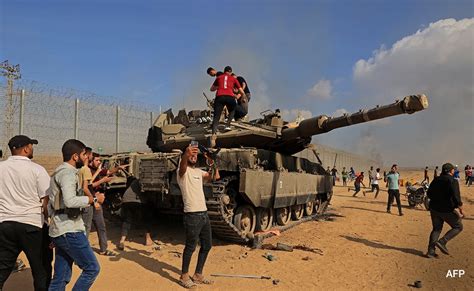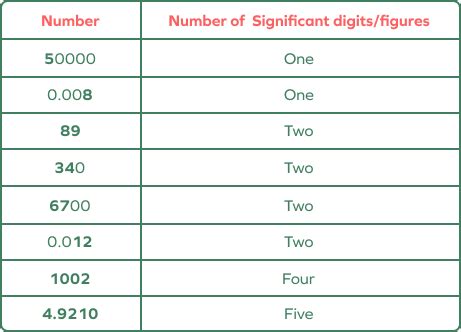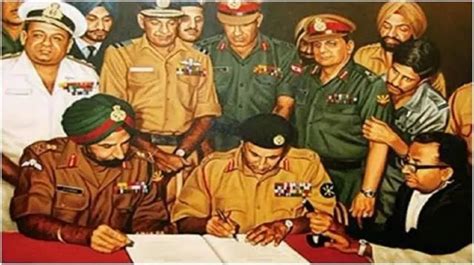Israel Palestine Conflict Explained

The Complex Dynamics of the Israel-Palestine Conflict

The Israel-Palestine conflict is one of the most enduring and complex geopolitical disputes of our time. It has spanned decades, shaped regional politics, and captured global attention. This article aims to provide an in-depth exploration of this conflict, shedding light on its historical roots, key players, and the myriad challenges it presents.
The roots of this conflict lie deep in history, with competing narratives and claims over the same land. At its core, it is a struggle for self-determination, national identity, and control over a territory that holds immense religious, cultural, and historical significance for both sides.
Historical Overview: A Tale of Two Homelands

The modern history of the Israel-Palestine conflict can be traced back to the late 19th century, a period marked by rising nationalism and the emergence of Zionist and Palestinian nationalist movements. These movements, rooted in a shared desire for a homeland, set the stage for a complex and often violent struggle.
Zionist Movement: A Homeland for the Jewish People
The Zionist movement emerged as a response to rising antisemitism in Europe and the belief that the only way to secure the future of the Jewish people was through the establishment of a Jewish state. The movement gained momentum in the late 19th century, with influential figures like Theodor Herzl advocating for a return to Zion, the ancient homeland of the Jewish people.
This movement led to increased Jewish immigration to Palestine, then under Ottoman rule. By the early 20th century, the Zionist vision of a Jewish homeland in Palestine had gained international recognition, most notably with the Balfour Declaration in 1917, which expressed British support for a "national home for the Jewish people" in Palestine.
Palestinian Nationalism: The Indigenous Struggle
Simultaneously, Palestinian nationalism emerged as a response to the growing Zionist presence and the perceived threat it posed to their land and identity. The Palestinian people, predominantly Muslim and Christian, saw themselves as the rightful heirs to the land, having lived there for generations. They resisted Zionist immigration and the establishment of a Jewish state, fearing displacement and the loss of their cultural and political rights.
The Arab Revolt of 1936-1939, a major uprising against British rule and Zionist immigration, marked a significant turning point in Palestinian resistance. Despite British efforts to contain the revolt, the Palestinian nationalist movement continued to gain strength, setting the stage for the conflict that would erupt with the creation of the state of Israel in 1948.
The Establishment of Israel and the Displacement of Palestinians
The 1948 Arab-Israeli War, also known as the Israeli War of Independence or the Palestinian Nakba (Catastrophe), was a pivotal moment in the conflict. It resulted in the establishment of the state of Israel and the displacement of hundreds of thousands of Palestinians, creating a refugee crisis that persists to this day.
The War and Its Aftermath
The war began with the declaration of Israel's independence on May 14, 1948, and was followed by invasions from neighboring Arab states. Despite being outnumbered, the Israeli forces, with the support of Zionist militias, managed to secure significant territorial gains. The war ended with armistice agreements in 1949, leaving Israel in control of a larger territory than originally planned.
The war had a devastating impact on the Palestinian population. Over 700,000 Palestinians were displaced, becoming refugees in neighboring countries or internally displaced within the territories controlled by Israel. This mass displacement, known as the Nakba, is a defining event in Palestinian history and a central grievance in the ongoing conflict.
The Refugee Crisis: A Continuing Legacy
The refugee crisis created by the 1948 war remains unresolved. Palestinian refugees and their descendants, numbering in the millions, have been denied the right of return to their ancestral homes, a demand enshrined in United Nations Resolution 194. This unresolved issue has been a major obstacle to peace, with Palestinians demanding the right to return and Israel fearing the demographic consequences of a mass return of refugees.
Key Players and Their Interests
The Israel-Palestine conflict is not just a struggle between two nations; it involves a complex web of actors, each with their own interests and motivations.
Israel: A Nation's Struggle for Security and Survival
Israel sees itself as a nation under constant threat, surrounded by hostile neighbors and facing ongoing security challenges. Its primary goals are to ensure its survival as a Jewish state, maintain its security, and establish peaceful relations with its neighbors. The Israeli government has consistently argued that these goals can only be achieved through a negotiated settlement with the Palestinians, but it has also taken unilateral actions, such as building settlements in the West Bank, which are seen as a major obstacle to peace by the international community.
Palestinians: A People's Quest for Self-Determination
For Palestinians, the conflict is about their right to self-determination and the establishment of an independent Palestinian state. They view the occupation of the West Bank, East Jerusalem, and the Gaza Strip as a denial of their basic rights and a violation of international law. The Palestinian Authority, which governs parts of the West Bank, and Hamas, which controls the Gaza Strip, represent different political and ideological factions within the Palestinian movement, but both share the ultimate goal of a sovereign Palestinian state.
International Actors: Regional and Global Powers
The Israel-Palestine conflict has also drawn in regional and global powers, each with their own interests and agendas. The United States, Israel's closest ally, has played a pivotal role in the peace process, often acting as a mediator and providing significant military and economic support to Israel. The European Union, while critical of Israeli policies, especially settlement activities, has also been involved in peace initiatives and is a major provider of aid to the Palestinian territories.
In the region, Arab states have varying levels of involvement and interest. Some, like Egypt and Jordan, have signed peace treaties with Israel, while others, such as Lebanon and Syria, remain in a state of conflict. Iran, a non-Arab state, has emerged as a key player, providing support to Palestinian factions and opposing Israel's existence. The conflict's dynamics are further influenced by regional alliances and rivalries, as well as the broader geopolitical struggles in the Middle East.
Challenges to Peace: A Complex Web of Issues

The path to peace in the Israel-Palestine conflict is fraught with challenges, many of which are deeply entrenched and complex.
The Two-State Solution: A Viable Option?
The two-state solution, which envisions an independent Palestinian state existing alongside the state of Israel, is widely regarded as the most viable path to peace. This solution has been supported by the international community, including the United Nations, and has been the basis of numerous peace initiatives. However, the implementation of this solution faces significant hurdles, including the issue of borders, the status of Jerusalem, and the question of Palestinian refugees.
Borders and Settlements: The Territorial Dispute
One of the most contentious issues in the conflict is the question of borders and Israeli settlements in the West Bank. The Green Line, the armistice line established after the 1948 war, is often cited as the basis for the borders of a future Palestinian state. However, the reality on the ground is far more complex. Israeli settlements, built in the West Bank and East Jerusalem, are seen as a major obstacle to peace, as they fragment the territory that would form a Palestinian state and raise questions about the viability and contiguity of such a state.
Jerusalem: A City of Contested Claims
Jerusalem, a city of immense religious and historical significance for Jews, Christians, and Muslims, is another major point of contention. Both Israelis and Palestinians claim Jerusalem as their capital, and the city is home to some of the most sacred sites in these religions. The status of Jerusalem, and specifically the issue of whether it should be divided or remain under a unified administration, is a highly sensitive and complex issue, with no easy solutions.
The Refugee Question: A Thorny Issue
The issue of Palestinian refugees, displaced during the 1948 war and subsequent conflicts, is another major obstacle to peace. The right of return for these refugees, as enshrined in UN Resolution 194, is a core demand of the Palestinian leadership and a major point of contention with Israel. Israel argues that the absorption of millions of refugees would threaten its demographic balance and its existence as a Jewish state. The refugee question is a highly emotional and politically charged issue, with no simple solutions.
The Impact of the Conflict: A Region in Turmoil
The Israel-Palestine conflict has had far-reaching implications, shaping the political, social, and economic landscape of the region. It has fueled tensions, influenced regional alliances, and contributed to a cycle of violence and instability.
Regional Instability and Security Concerns
The conflict has been a major source of regional instability, with periodic outbreaks of violence and the threat of broader conflagration. It has also influenced regional alliances, with some Arab states forming closer ties with Israel as a counterweight to Iranian influence, while others remain in a state of hostility. The conflict's security implications are far-reaching, affecting not only the immediate region but also global security interests.
Humanitarian Crisis and Development Challenges
The ongoing conflict and occupation have created a humanitarian crisis in the Palestinian territories. Limited access to resources, restricted movement, and the destruction of infrastructure have led to high levels of poverty, unemployment, and dependence on aid. The Gaza Strip, under Israeli blockade since 2007, has faced particularly severe conditions, with frequent outbreaks of violence and a dire humanitarian situation.
The Impact on Civil Society and Daily Life
The conflict has taken a heavy toll on civil society and the daily lives of Israelis and Palestinians. It has fostered an environment of fear, suspicion, and trauma, affecting mental health and social cohesion. The constant threat of violence, the presence of checkpoints and barriers, and the uncertainty of political developments all contribute to a sense of insecurity and uncertainty for both populations.
The Future of the Conflict: Prospects and Challenges
Despite the challenges, there have been numerous efforts to bring about a peaceful resolution to the conflict. Peace initiatives, negotiations, and even informal talks have been attempted, with varying degrees of success. The Oslo Accords of the 1990s, for instance, led to a period of relative calm and the establishment of the Palestinian Authority, but the ultimate goal of a comprehensive peace agreement has remained elusive.
Recent Developments and Prospects for Peace
In recent years, there have been efforts to revive the peace process, including the Trump Administration's Peace Plan, which proposed a two-state solution with significant concessions from the Palestinian side. However, this plan was rejected by the Palestinian leadership, and its viability has been questioned by many analysts. The Biden Administration has signaled a return to more traditional U.S. approaches to the conflict, including support for a two-state solution and engagement with the Palestinian Authority.
The Role of International Community and Civil Society
The international community, through organizations like the United Nations and the Quartet (consisting of the United States, the European Union, Russia, and the United Nations), has played a significant role in attempting to broker peace. Civil society organizations and grassroots movements have also been active, advocating for peace, human rights, and an end to the occupation. These efforts, while often challenging, offer hope and a path forward toward a more peaceful and just resolution of the conflict.
Conclusion: A Complex Path to Peace
The Israel-Palestine conflict is a multifaceted and deeply rooted dispute that has defied easy solutions. It involves a clash of national narratives, competing claims over a sacred land, and a complex web of political, economic, and security interests. While the path to peace is fraught with challenges, the ongoing efforts of negotiators, mediators, and civil society offer a glimmer of hope. A peaceful resolution, while elusive, remains the ultimate goal, as it would not only bring an end to a long-standing conflict but also pave the way for a more stable and prosperous future for both Israelis and Palestinians.
What is the current status of the peace process in the Israel-Palestine conflict?
+The peace process has faced significant challenges in recent years. The Trump Administration’s Peace Plan, which proposed a two-state solution with significant concessions from the Palestinian side, was rejected by the Palestinian leadership. The Biden Administration has signaled a return to more traditional U.S. approaches, including support for a two-state solution and engagement with the Palestinian Authority. However, the path forward remains uncertain, with ongoing tensions and a lack of trust between the parties.
What are the main obstacles to a two-state solution in the Israel-Palestine conflict?
+The two-state solution faces several significant obstacles. These include the issue of borders and Israeli settlements in the West Bank, the status of Jerusalem, and the question of Palestinian refugees. The Israeli government has taken unilateral actions, such as building settlements, which are seen as a major obstacle to peace by the international community. Additionally, the Palestinian leadership’s demand for the right of return for refugees, as enshrined in UN Resolution 194, is a core issue that has yet to be resolved.
How has the Israel-Palestine conflict impacted the region’s stability and security?
+The conflict has been a major source of regional instability, with periodic outbreaks of violence and the threat of broader conflagration. It has influenced regional alliances, with some Arab states forming closer ties with Israel as a counterweight to Iranian influence, while others remain in a state of hostility. The conflict’s security implications are far-reaching, affecting not only the immediate region but also global security interests.



